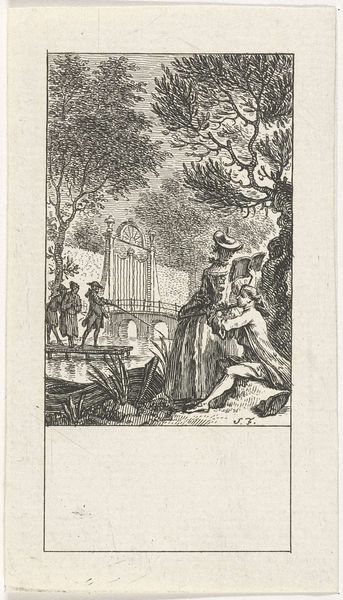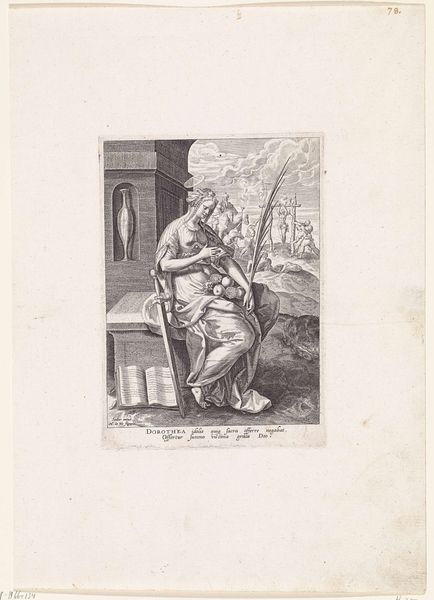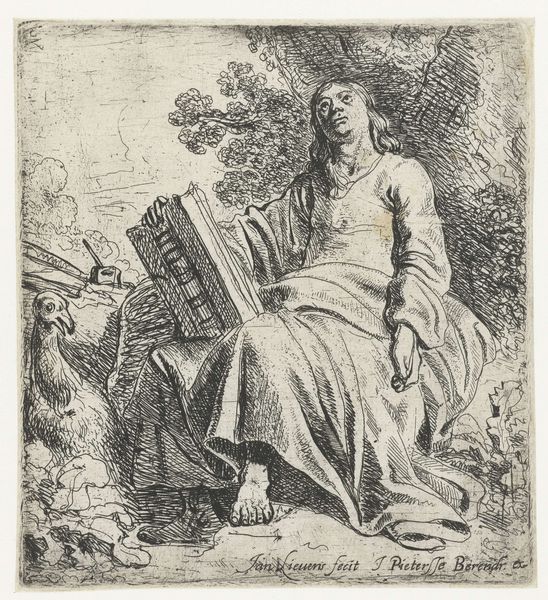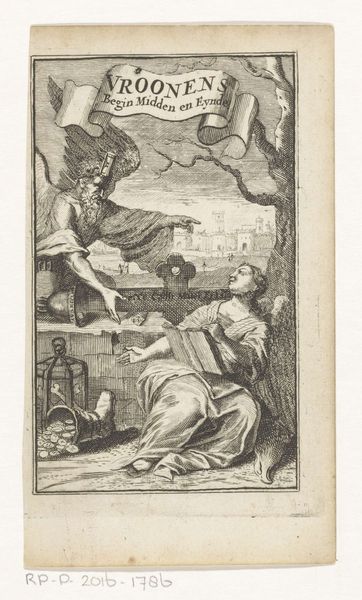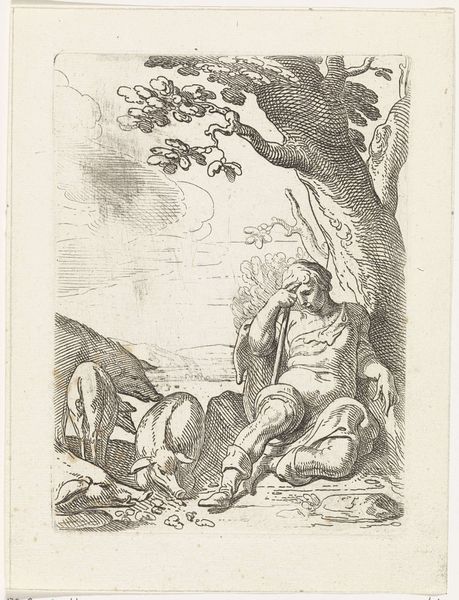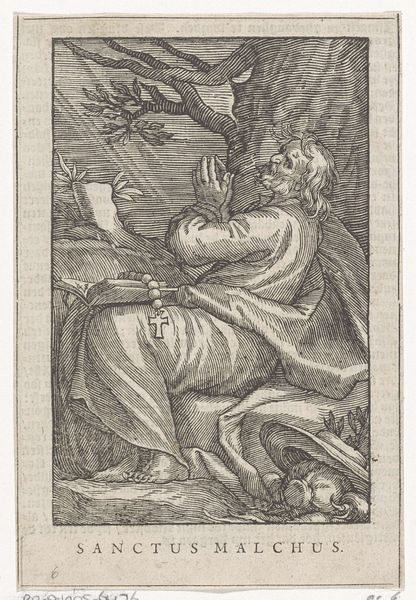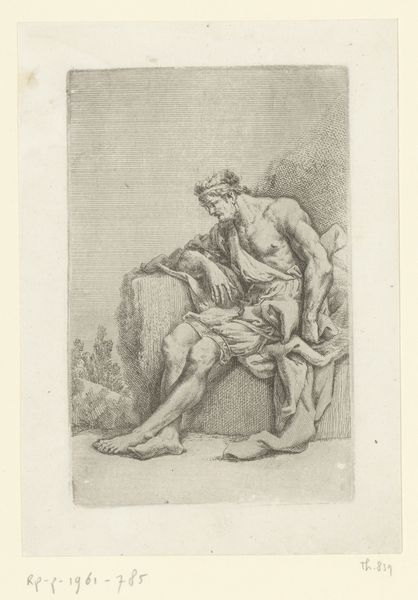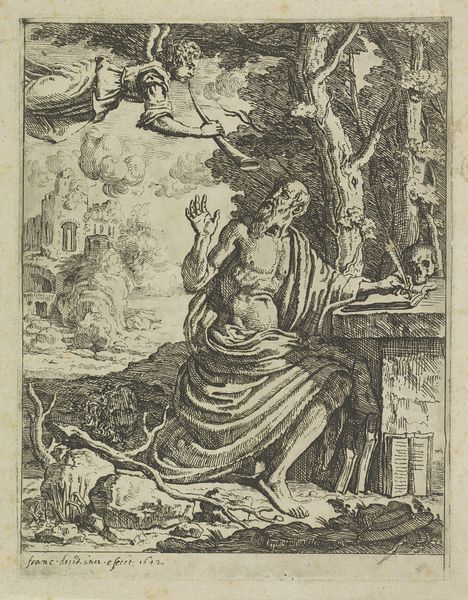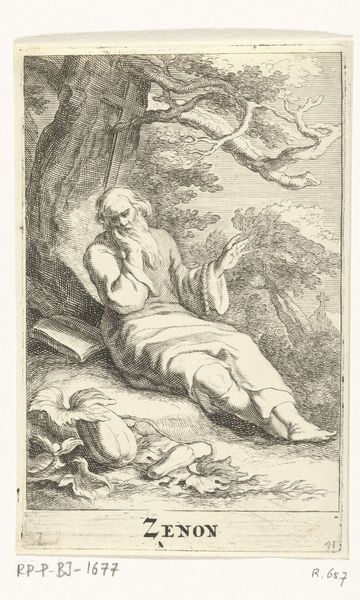
etching, engraving
#
narrative-art
#
etching
#
landscape
#
figuration
#
11_renaissance
#
history-painting
#
northern-renaissance
#
engraving
Dimensions: height 115 mm, width 75 mm
Copyright: Rijks Museum: Open Domain
Curator: Before us, we have "Jacob's Dream," an engraving by Pieter Huys dating to somewhere between 1545 and 1577, currently held here at the Rijksmuseum. Editor: My first impression is one of stark contrasts. The detailed rendering of Jacob asleep clashes a bit with the almost whimsical ladder reaching to heaven. There's an otherworldly quality to it all. Curator: Precisely. It illustrates the biblical story from Genesis where Jacob, fleeing his brother Esau, rests his head on a stone and dreams of a ladder extending from Earth to Heaven, with angels ascending and descending. The ladder is not merely a passage but a symbolic nexus, connecting the human and the divine. Editor: And look at that other figure, on the top left. He appears to be either urinating into, or pouring a liquid onto what is likely an altar or font of some sort. This brings up complicated themes around faith, masculinity and personal devotion within religious contexts of the time. How might contemporary gender studies enrich how we understand the purpose and symbolism of that small figure and scene? Curator: Good question. Beyond that individual representation, the ladder itself has many precedents in older traditions of "axis mundi", world pillars, cosmic mountains – any place of connection that’s central to people’s beliefs, like a vertical lifeline of hope and promise of ultimate transformation. Editor: Do you find it troubling though, that hope is channeled almost exclusively through male figures? Where does this leave those who don't see themselves in that framework, and what responsibility does an institution like the Rijksmuseum have to ensure that various narratives and viewpoints can co-exist around works like this one? Curator: I understand that critique and feel those are very valid points, and I suppose by simply prompting such questions, these pieces fulfill a powerful and perhaps even essential function. It’s work that needs to continue, no matter what the work's origins may be. Editor: I concur, engaging with the history of art and ideas isn’t merely an archeological enterprise but one that carries a deep and very personal responsibility. Curator: It reframes our vision to a place where, perhaps, history and its visual components can bring change.
Comments
No comments
Be the first to comment and join the conversation on the ultimate creative platform.
